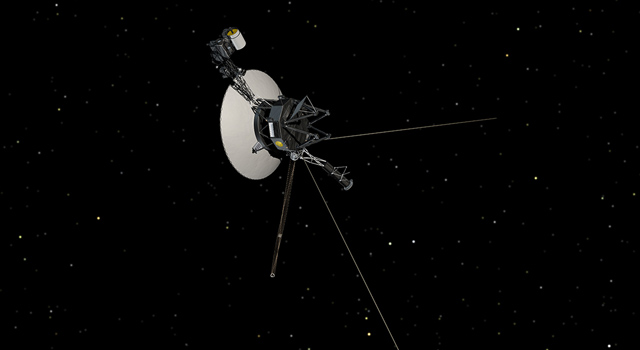News | June 5, 1989
Voyager 2 Enters Final Planetary Encounter

NASA's Voyager 2 spacecraft today entered the observatory phase of its flyby of Neptune, signaling the beginning of its final planetary encounter after nearly 12 years of exploring the outer solar system.
Voyager mission controllers at the Jet Propulsion Laboratory in Pasadena, Calif., will now be tracking the spacecraft around the clock as Voyager begins taking systematic images of Neptune and sending back about 50 pictures day.
"Now that we've entered the observatory phase we'll be taking about six images every three hours to study changes in the atmosphere from rotation to rotation," said Dr. Ellis Miner, Voyager deputy project scientist.
Signals from Voyager 2 marking the beginning of the observatory phase were received at 3:40 a.m. Pacific Daylight Time. This official start of the Neptune encounter places Voyager at the top of the priority list of spacecraft being tracked by the NASA/JPL Deep Space Network. Before today, Voyager had to compete with other projects for DSN coverage. During the observatory phase, the spacecraft will be monitored at regular intervals by more than one antenna at each of the DSN sites in California, Spain and Australia.
In addition to taking images of the planet, Voyager 2 will also be making systematic ultraviolet observations of Neptune looking for any auroral activity and escaping gases. Calibrations of the spacecraft's instruments will also be done in preparation for critical near-encounter observations.
In observations of Neptune made by Voyager 2 in late 1988 and January of 1989, scientists saw bright spot in the southern hemisphere of the planet. Since January, that spot has dimmed and larger dark area has been seen in the images. Recently, the bright spot has begun to brighten again and other spots are becoming apparent. Neptune's atmosphere has also revealed regions of dark banding near its southern pole and similar banding has been seen north of the planet's equator.
Voyager's observatory phase ends and its far encounter phase starts on Aug. 6, 1989.
The near-encounter phase of the mission includes Voyager's closest approach to Neptune at 9 p.m. Pacific Daylight Time on Aug. 24, 1989, when the spacecraft passes just 4,850 kilometers (3,000 miles) from the planet's cloud tops. Five hours later, the spacecraft will fly about 39,000 kilometers (24,000 miles) from the planet's major moon Triton.
Voyager 2 is now 117 million kilometers (73 million miles) from Neptune. The Neptune flyby will be Voyager 2's fourth and final planetary encounter before the spacecraft heads out of the solar system to explore interstellar space.
Launched in 1977, Voyager 2 and its twin Voyager 1 have encountered Jupiter and Saturn. Voyager 2 went on to fly by Uranus in January 1986 while Voyager 1 continues its trek out of the solar system.
Now 4.271 billion kilometers (2.654 billion miles) from Earth, Voyager 2 is so far away that data radioed at the speed of light (186,000 miles per second) take nearly four hours to reach Earth. Voyager's images are being recorded on the spacecraft's tape recorders and will be played back to Earth beginning Tuesday morning.
The Voyager project is managed by the Jet Propulsion Laboratory for NASA's Office of Space Science and Applications.
